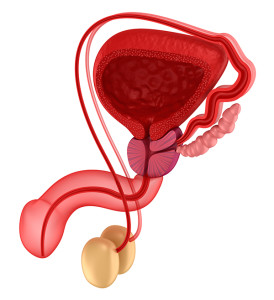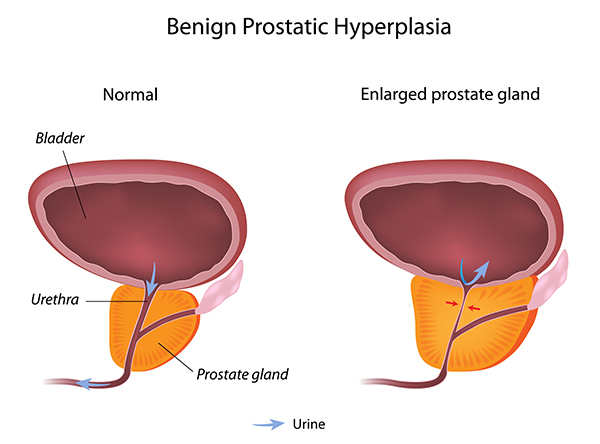What Is BPH? Defining Benign Prostatic Hyperplasia
The condition known as benign prostatic hyperplasia (BPH) is characterized by non-cancerous enlargement of the prostate gland. As the prostate enlarges, symptoms related to the obstruction of urine flow from the bladder through the urethra can occur.
It’s an understandable question among men as they age: What is BPH?
BPH stands for benign prostatic hyperplasia, a very common condition occurring in approximately 25 percent of men by the age of 55 and 50 percent of men by the age of 75. Despite this prevalence, treatment for BPH is not always necessary.
In fact, only 20 to 30 percent of men by the age of 80 need treatment for BPH. It is not yet clear why BPH occurs, although scientists expect that fluctuations in male hormones and genetic factors play a role. It’s important to note that BPH is not a pre-cancerous condition.
Risk Factors for BPH
Researchers have identified a number of risk factors for developing BPH.
- Age: Based on the current understanding of the disease, age appears to be the most significant risk factor for BPH. Some evidence suggests that by the age of 85, some 85 percent of men will have BPH. It is very uncommon for men under the age of 40 to have symptoms of BPH.
- Genetics: Men with a family history of BPH, particularly in their father or brother(s), are at increased risk of developing the disease.
- Heart disease: Research has demonstrated that having heart disease might be a risk factor for BPH.
- Diabetes: Some studies have seen a link between diabetes and BPH.
- Low HDL level: Having low levels of high density lipoprotein cholesterol (HDL), known as “good” cholesterol, has been associated with an increased risk of BPH.
- Race: African-American men and Caucasian men have a higher risk of developing BPH than do Asian-American men.
- Obesity: Obese men have a greater risk of BPH than men of normal weight.
Symptoms of BPH
The symptoms that occur in BPH are all ultimately consequences of the enlarged prostate tissue impeding the flow of urine through the urethra, the tube that carries urine from the bladder to the penis.

Your prostate rests underneath the bladder and the ureter passes through it. An enlargement of the prostate, called benign prostatic hyperplasia or BPH, constricts the ureter and leads to difficulties urinating.
Some of these symptoms are the direct mechanical result of obstructed urine flow and some are the result of the changes to the bladder that occur because of chronic obstruction. The former are often called “obstructive” symptoms. The latter are often called “irritative” symptoms because the bladder becomes irritated by urinary retention and the need to work harder to empty urine.
BPH: Obstructive Symptoms
- Urinary hesitancy: Men with BPH will often have trouble initiating urination despite significant straining and despite the urge to urinate.
- Weak urine stream: The urine stream may be weak and punctuated by periods of interruption (a “start-stop” pattern).
BPH: Irritative Symptoms
- Urinary urgency: Changes to the bladder from chronic obstruction can cause men with BPH to feel the sudden and immediate urge to urinate.
- Urinary frequency: An irritated or hypersensitive bladder can also result in the sensation that one has to urinate frequently.
- Incomplete bladder emptying: Some men with BPH may feel as though they are not able to fully empty their bladder.
- Nocturia: The need to urinate frequently at night is often present in men with BPH.
If you suspect you have BPH you should contact your doctor. There are many treatment options available to help relieve symptoms and restore your quality of life.

Detailed view showing normal prostate, left, and enlarged prostate, right, with attendant restrictions in ureter.
Originally published in April 2016 and updated.


 Can Prostate Supplements Reduce Your Risk of Prostate Cancer?
Can Prostate Supplements Reduce Your Risk of Prostate Cancer?  What Is Robotic Prostatectomy & The Advantages of Robotic Surgery
What Is Robotic Prostatectomy & The Advantages of Robotic Surgery  What Can Skew a PSA Test? These 10 Factors Can Affect Your Numbers
What Can Skew a PSA Test? These 10 Factors Can Affect Your Numbers 
BPH (benign prostatic hyperplasia) can affect the flow of urine and urinary frequency, among other symptoms.
© Angkritth | Dreamstime.com